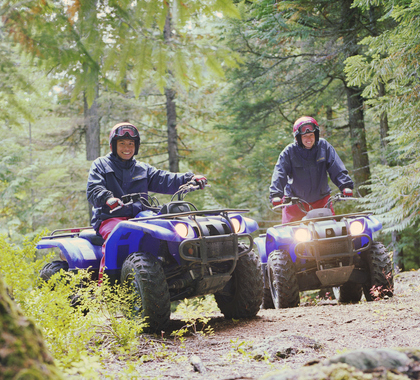After five years of legal wrangling, the 11th Federal Circuit Court of Appeals in Georgia ruled in favor of a National Park Service (NPS) plan to allow more than 130 miles of off-road vehicle trails in the Big Cypress National Preserve (BCNP), and to reduce the protected primitive area within BCNP. The August 31, 2016 decision was a blow to the six environmental groups and their individual members who had challenged the NPS’s plan.
At more than 574,000 acres, stretching from Miami to Naples in Florida, BCNP is a large federally protected area. When the Park Service expanded it by about 112,000 acres in 1988, the lands added contained approximately 244 miles of off-road vehicle (ORV) trails open to the public prior to BCNP’s expansion. These trails were closed from 1996 until NPS approved more than 130 miles as sustainable ORV trails in 2011. While the NPS originally designated approximately 93,000 acres of the added lands as primitive backcountry, closed to ORV access, it later decided to reduce the backcountry area to 71,000 acres after adding a buffer zone around the trails because, in its words, of the “presence of human disturbance.”
Various sportsmen’s and ORV user groups had filed comments supporting NPS’s decision to expand off-road access.
When the National Parks Conservation Association; the Public Employees for Environmental Responsibility; the Florida Biodiversity Project; the Sierra Club; the South Florida Wildlands Association; Wilderness Watch; and the Florida Biodiversity Project filed suit in 2011 to block NPS’s BCNP proposal, Safari Club International (SCI), among other groups, filed friend of the court briefs defending NPS’s plan.
ORV Access Justified
In 2014 a federal judge ruled in favor of NPS’s plan, a decision environmentalists challenged. The 11th Circuit Court affirmed the 2014 decision.
Writing for the court, U.S. District Judge William Moore said “The NPS did not require that an area be pristine and untouched by humans to be found wilderness-eligible. The record shows that the NPS required the area to be free of any substantially noticeable human imprint, which is what is required under the Wilderness Act.”
Giving deference to the Park Service’s expertise, Moore wrote, the NPS’s determination a one-half mile buffer around ORV trails “contains a substantially noticeable human imprint is the result of reasoned decision-making, and not arbitrary and capricious.” As a result, the court held NPS’s decision to expand ORV access and to reduce the size of wilderness in the BCNP was justified.
“Barring an unlikely appeal to the Supreme Court, the Big Cypress Addition Lands plan should remain in place,” wrote SCI, commenting on the decision on its blog. “Thanks to this victory, sportsmen and women can continue to enjoy the Addition Lands, including by access on their ORVs.”
H. Sterling Burnett, Ph.D., ([email protected]) is the managing editor of Environment & Climate News.





